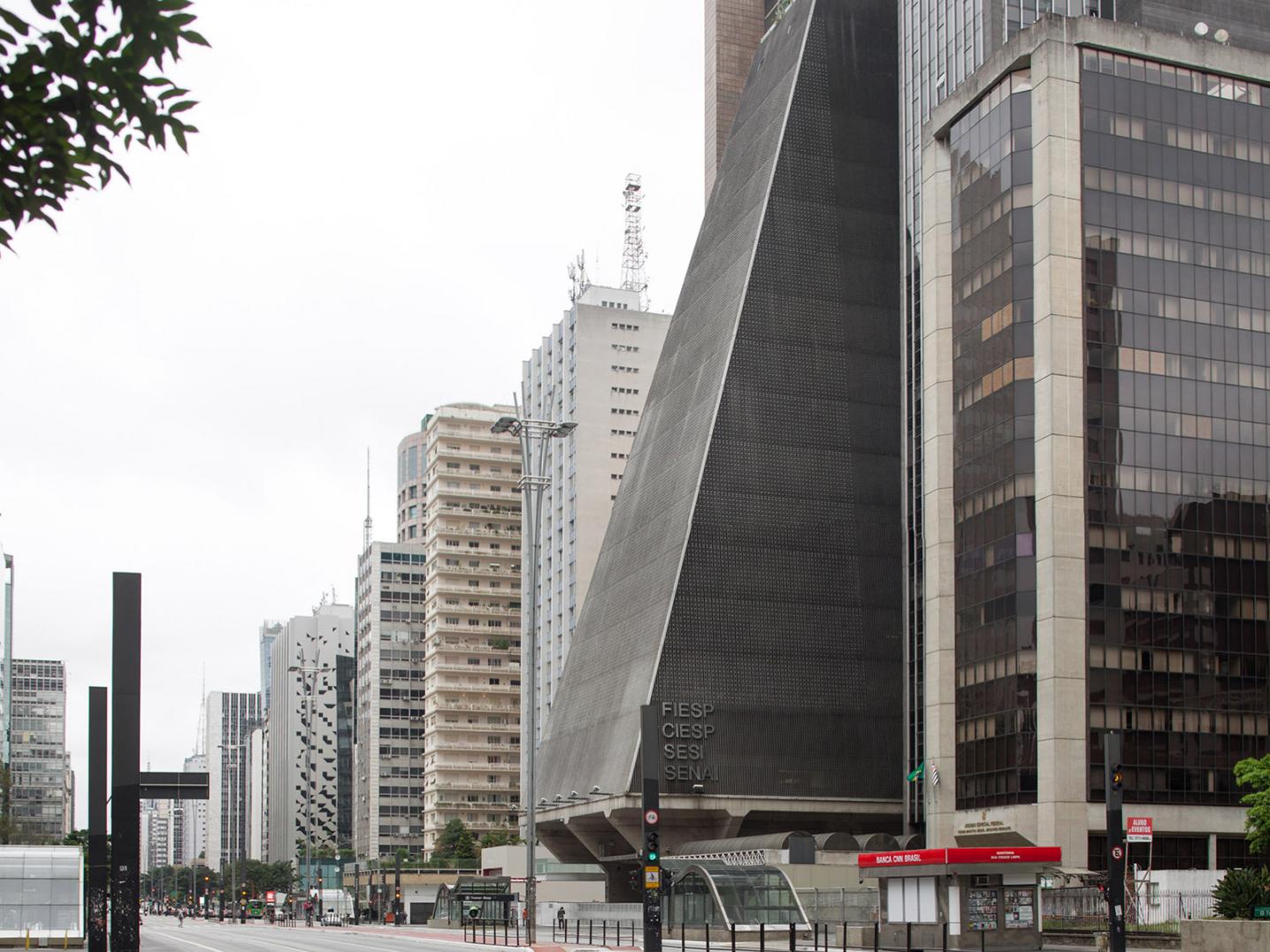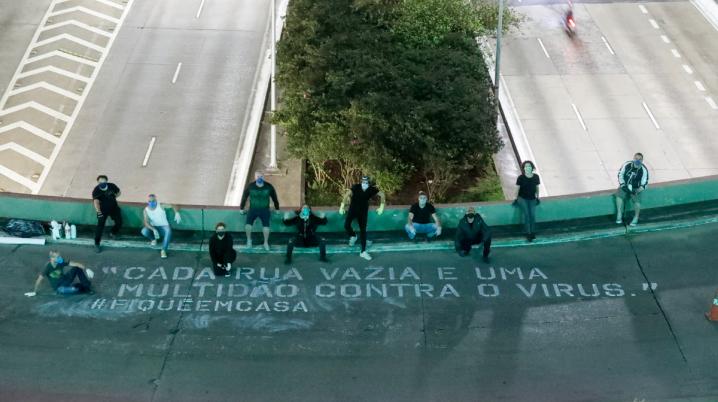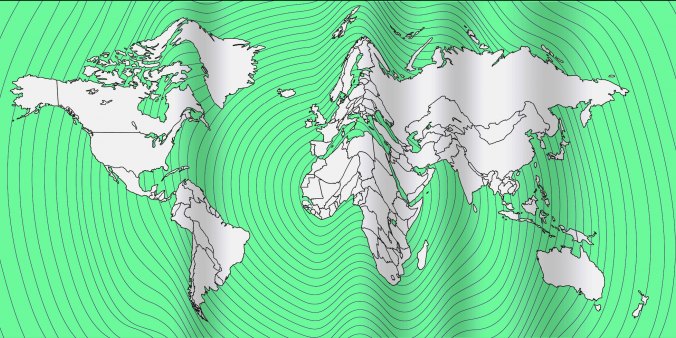
How is the city of São Paulo dealing with the COVID-19 pandemic? And how are art and culture professionals responding to the crisis? On 4 June, several experts from São Paulo connected through Zoom for a conversation from Pakhuis de Zwijger led by moderator Zoë Papaikonomou, and with the participation of Dutch journalist and writer Ineke Holtwijk. (Video below)
Current situation and background
Amid the developing coronavirus crisis over the past months, international attention started to focus more and more on South America, and on Brazil in particular, as the country with the highest number of confirmed cases within the region. By now it is second on the list of most affected countries worldwide, with more than 100,000 deaths reported by the end of August. However, the WHO says that the pandemic is currently stabilising in Brazil.
One of the Brazilian cities affected by the coronavirus is São Paulo, with 20 million inhabitants in the metropolitan area. A city which is not only the financial and economic centre of Brazil, but also unequalled in its cultural and artistic offering. Last March, after the São Paulo city authority announced quarantine orders, the spread of the virus slowed. With less residents respecting the quarantine or being able to do so for a longer period of time, the numbers started to rise again. In response to the crisis, São Paulo’s cultural and creative sector is using its distinctive entrepreneurial and inventive ways to work, and not just to survive but also to have a positive social impact.

Capturing emptiness
Felipe Aravena of Drone Birdun filmed an incredible empty São Paulo from above with a drone. City photographer and urbanist Tuca Vieira – known for his image of the Paraisópolis favela next to its wealthy neighbour Morumbi in São Paulo – likewise took the opportunity to make a visual testimony of “this historical moment”. While out photographing the city “that is usually always busy, now it was shockingly quiet and peaceful, even the light and the air were different.” He adds that people are already filling the streets again, mostly because staying at home is not an option, financially.
Social impact and impact on the cultural sector
Journalist and writer Ineke Holtwijk, who divides her time between the Netherlands and Brazil, explains that the healthcare system of the city of São Paulo is well organised, and even with the current high number of cases, the situation is under control. Without support from the federal government, leaders at the level of the state and the city took their own measures to tackle the virus, for example by closing non-essential stores. With São Paulo being “the economic powerhouse of the country, pressure is high to end social isolation as soon as possible,“ she says.
Art critic, curator and researcher Larissa Macêdo stresses that the social inequality – “being a big part of Brazil’s history” – is now causing even more severe situations for the poor black and indigenous populations, in particular for women working in essential care. People are also losing their jobs and their income. With the government not helping (sufficiently), civil society is stepping in with various initiatives. Members of São Paulo’s carnival group of black women, Ilú Obá de Min, started to share their incomes among each other for example. “We Brazilians are affectionate people who like to help each other.”
João Leiva, cultural entrepreneur and researcher on access and exclusion to cultural activities in Brazilian cities, says something similar is happening in the cultural sector: “Local initiatives like crowdfunding and donations try to reduce the impact of the current crisis, but what we still miss is an articulated answer from the government to protect artists and cultural institutions. This is partially due to a lack of coherence between different government levels.” He points out that all cultural venues in the city of São Paulo had to close since the beginning of March. “When they will reopen and what the rules will be is not clear yet. In any case, less people will for example have the possibility to pay for a theatre ticket.”
All three experts agree that inspiring creative initiatives in public space and on social media are very welcome, since “the near future looks unfortunately bleak for the city of São Paulo and Brazil in general,” as Ineke Holtwijk says.

Creative responses in times of crisis
To encourage the citizens of São Paulo, on Mother’s Day pianist Rodrigo Cunha played on a lorry driving through the streets, an initiative made possible by D. Filipa. “It shows the importance and impact of music on people”, says Danilo Crispim, flautist and music teacher. He explains that his work changed radically because of the corona crisis. The Bachiana Filarmonica orchestra, of which he is a part, stopped rehearsing and performing. The more than 40 music centres of Guri Santa Marcelina where he works are closed. He now teaches his students online and produces alternative video classes. However, many of the pupils do not have instruments of their own or even access to the Internet. “So we try to figure out how we can maintain the bond with our students, since we believe that this is most important.”
The work of visual artist Juliana dos Santos consists of collective performances and installations, which means she now needs to find other ways to make her art and connect with others. She is one of the participants of the current Mercosul art biennial that decided to continue entirely online instead of closing down. “It is an important edition,” she states, with Fabiana Lopes as the first black curator focusing on female artists. “I was sad at first, but it gave me the opportunity to show my research and the process of my work online, besides the valuable exchange with other artists.” This is something she otherwise would not have experienced, she admits.
Creative director Marcelo Nogueira is part of the project Ruas do Bem that translates as Streets of the Good. It is a direct response to the corona crisis: “We paint 15 meter-long phrases on the streets of São Paulo, always with a positive and optimistic approach like ‘The city is not empty, it is full of love between people’. The project was the idea of Victor Ghiraldini and since words and communication are the tools I work with, I wanted to help and came up with several phrases. In the beginning we almost got arrested by the police but now we have permission and we get great responses, in person or through social media.”

All three artists still expect hard times to come, but also think there can be a positive outcome with culture and the arts being valued in different ways as well as stimulating people to connect with others and being together. They are at any rate convinced that we need to believe that we can change for the better.
Institutional support and the creative city
“In March we had to close our more than 40 cultural centres across the state of São Paulo, including those in the city,” says Aurea Vieira, head of international affairs at SESC São Paulo. “There is still no clear prospect of reopening again. We have been organising a number of activities in the meantime. Not only delivering food to thousands of families and institutions, but we are also responding with a lot of online programming, we have a sports channel, we present live concerts and theatre experiments online. We call them experiments since they are not the same as before.”
SESC is currently undergoing budget cuts that will continue in the near future because their means depend on employment rates in the commercial sector. It will also be a major challenge to adapt the centres and programming to the new situation with social distancing in place. “However,” says Aurea Vieira, “I hope that we will find light at the end of the tunnel, since a life without arts is not possible”.

Economist and urbanist Ana Carla Fonseca works with São Paulo as a creative city and studies how creativity can play a role in growth, innovation and development. “São Paulo has a huge variety in terms of culture, the city has so much to offer – though less at the moment - that it is almost impossible to choose. Economically it had to reinvent itself many times, so there is a strong history of innovation. But we do need more interconnectedness and basic sanitation and safety for everyone in São Paulo.” In her view, creativity has a role to fulfil here, as well as in reinventing the city after the pandemic.
Ana Carla Fonseca already observes many examples where art and creativity are brought to the people, for example by SP Urban Arte Conecta. Art is projected on facades and walls for the citizens to watch from their windows. She particularly appreciates the help of others through art, like muralist Kobra is doing with a work he made, depicting children from all over the world wearing face masks. The funds he raises benefit children in need. “Thinking of others could be a legacy the pandemic can give us,” she says.

Final remarks
What stood out for Ineke Holtwijk while listening to all the speakers is the confirmation of how open-minded, flexible, affectionate and creative Brazilians are. How they are reinventing and rediscovering, at the same time, the power of art and the joy of being together. Larissa Macêdo adds that she wishes people learn to value arts and culture even more, since “they are not the problem but the solution.” They can help us to survive this crisis.
Check out the complete overview of Dutch cultural activities in Brazil in our Database.
If you are a cultural professional who wants to go to Brazil, feel free to contact our Brazil advisor Josine Backus.
For funding or cooperation possibilities, check out our Cultural Mobility Funding Guide or the websites of our partners Film Fund, Performing Arts Fund NL, Dutch Foundation for Literature, Mondrian Fund, Creative Industries Fund NL, Cultural Participation Fund, EYE International, Het Nieuwe Instituut, Cultural Heritage Agency of the Netherlands, National Archives or the Dutch diplomatic missions in Brazil among others.





